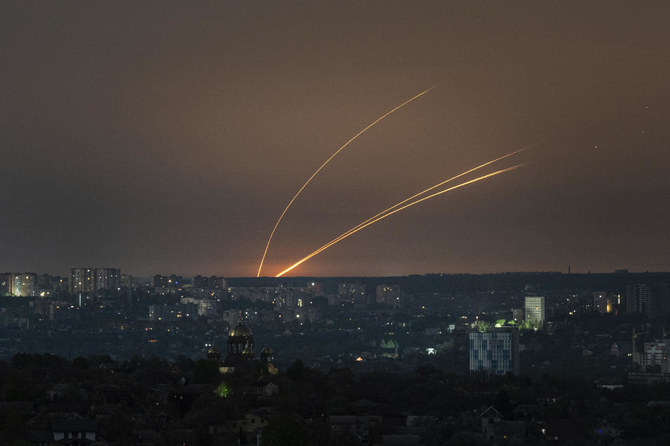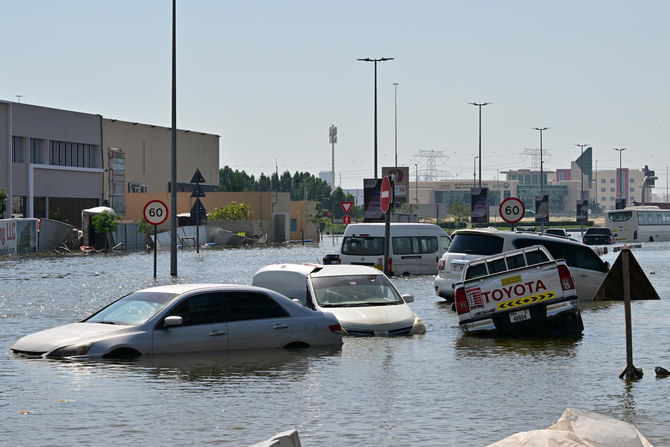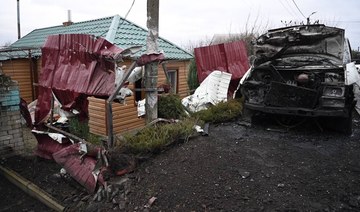NEW DELHI: Vishal Chowdhary is young, bright and armed with an MBA. But he has spent two years struggling to find work in India's sluggish jobs market -- a major headache for Prime Minister Narendra Modi ahead of looming elections.
The government's failure to create enough jobs in Asia's third-biggest economy is a key issue for voters in the polls that are set to take place between April 11 and May 19 with results on May 23.
"I went for 50 job interviews in the last year but with no success. One company I did join laid off most of its staff, bringing me back to square one," Chowdhary, 27, told AFP.
Increasingly desperate, late last year he became one of 23,000 applicants for five government jobs as a "peon" or "office boy" with duties like making tea and photocopying, well below his qualifications.
The shocking figures are not unusual in 1.25-billion-strong India, particularly for secure government jobs with perks that attract hordes of overqualified candidates like Chowdhury. Last year 19 million applied for 63,000 positions at Indian Railways.
Modi swept to power in 2014 pledging to modernise India and create jobs for the one million young people estimated to enter the labour market every month.
Some 65 percent of Indians are under 35, and economic growth has in recent times fallen below the eight-percent level seen as essential to create enough employment.
A newspaper recently published what it said was an official report buried by Modi's government showing unemployment at its highest since the 1970s.
Rahul Gandhi, head of the opposition Congress party, attacked Modi for creating a "national disaster".
The report -- which the government said was not finalised -- added to evidence that the economy was hit hard by two of Modi's signature policies: demonetisation and a new Goods and Services Tax (GST).
The first saw 86 percent of banknotes withdrawn overnight in 2016 to bring the cash-only black economy out of the shadows. The second in 2017 was to simplify India's stultifying thicket of a tax code.
Almost half the workforce toils in agriculture, and although workers are moving to manufacturing and services as the economy modernises, the rate is slower than elsewhere in Asia.
These sectors are not creating enough jobs, hampered by stringent labour laws and insufficient investment in skills training, according to the Organisation for Economic Co-operation and Development (OECD).
Another factor is a sharp fall in private investment, resulting in "very little" job creation in the private sector, said Santosh Mehrotra, a professor at Jawaharlal Nehru University.
This lack of investment is caused in part by the "huge crisis" of bad debts at India's state-owned banks, making them reluctant to lend, Mehrotra told AFP.
Red tape and corruption also make buying land for factories difficult, and infrastructure is often poor.
Furthermore India is battling a dearth of decent data on which to base policy, not helped by vast numbers of people working in the shadow, cash-only economy who are therefore not counted.
"(More) than a lack of jobs, the issue is a lack of data on jobs," Modi said last year.
The situation is particularly dire for women.
The female workforce participation rate tumbled from 38.7 percent in 2005 to 28.6 percent in 2017, one of the lowest in the world, according to the World Bank.
In the highly status-conscious and patriarchal society, women often give up working once their household income rises. The decline of agriculture, which employs more women, has also had an effect.
While India's universities may produce large numbers of graduates, there is a mismatch with what the labour market requires, and basic education for the poor is patchy.
One in eight 14-year-old students in rural India cannot read simple texts, while 56 percent can't do basic division, a recent survey showed. Millions of children aren't even in school.
"The sectors which are growing are modern services -- telecom, education, health, banking. This requires a much higher level of education than what is available to youth today," Mehrotra said.
According to an India Today opinion poll published on Monday, unemployment is the biggest issue for voters.
"Education and jobs are two very important topics for the youth. This government has failed on both these fronts," S. Malik, a student, said at a recent protest in Delhi.
"This government's failure means it should be voted out," he told AFP.
Jobless millions to haunt India election
Jobless millions to haunt India election

- Modi swept to power in 2014 pledging to modernise India and create jobs for the one million young people estimated to enter the labour market every month
- Almost half the workforce toils in agriculture, and although workers are moving to manufacturing and services as the economy modernises
Man arrested after Denmark’s Billund Airport evacuated over bomb threat
COPENHAGEN: A man was arrested in Denmark on Saturday in connection with a bomb threat at Billund Airport, the country’s second largest aviation hub, police said in a statement.
The airport, in central western Denmark, was evacuated and remains shut following the threat.
“The evacuation has proceeded calmly and as expected, with travelers following our instructions,” police inspector Michael Weiss said in a statement.
Investigations into the incident are continuing, the police said, adding it was not clear when the airport would reopen.
Indonesia on highest alert as Sulawesi volcano continues to erupt

- Over 7,500 people living near the volcano have so far been evacuated
- Volcanic activity is common in Indonesia, which lies on the Pacific ‘Ring of Fire’
JAKARTA: Indonesian authorities were on the highest alert on Saturday as a volcano in North Sulawesi continued to erupt. Thousands living nearby have been forced to leave their homes.
Mount Ruang, located on the northern side of Sulawesi Island, had at least eight eruptions since April 16, including a major one on Wednesday evening, which prompted Indonesia’s volcanology agency to issue its highest alert, which indicates an active eruption.
The center recorded at least two eruptions on Saturday, with the crater emitting white-gray smoke more than 1,200 meters above its peak after midnight, followed by another eruption at noon that released an ash column of about 250 meters.
“Based on visual observations, as of April 20, 2024, at 12:15 p.m., there is still high volcanic activity in Mt. Ruang,” Muhammad Wafid, head of the geology department at the Ministry of Energy and Mineral Resources, said in a statement.
“The potential danger is an explosive eruption that may cause the mountain to spew volcanic rocks in different directions, followed by clouds, as well as effusive eruption, or lava flow.”
With authorities having established a six-kilometer exclusion zone around the volcano, around 7,500 people have so far been evacuated, including more than 1,500 residents who live on the smaller island where Mount Ruang stands, and around 6,000 people living on neighboring Tagulandang island, northeast of the volcano, according to the latest data from Indonesia’s National Disaster Mitigation Agency. Thousands more are still at risk.
The international airport in Manado city, less than 100 kilometers away from Mount Ruang, is closed until at least Sunday because of volcanic ash.
“There are still concerns, because tremors and volcanic earthquakes are still being recorded by our devices, indicating magmatic fluid supply is still moving from the depth to the surface,” Hendra Gunawan, who heads Indonesia’s volcanology agency, told Arab News.
“There’s still potential for more eruptions … And a tsunami may occur if there is a large flow of volcanic material into the sea.”
Indonesia, a vast archipelago nation, has around 120 active volcanoes. The country experiences frequent seismic and volcanic activity due to its location on the arc of volcanoes and fault lines in the Pacific Basin known as the “Ring of Fire.”
Moscow says 50 Ukrainian drones shot down as attacks spark fires at Russian power stations

- Fifty drones were shot down by air defenses over eight Russian regions, including 26 over the country’s western Belgorod region
- Russia’s Defense Ministry said that it had shot down a Ukrainian Sukhoi Su-25 fighter jet
KYIV: Ukraine launched a barrage of drones across Russia overnight, the Defense Ministry in Moscow said Saturday, in attacks that appeared to target the country’s energy infrastructure.
Fifty drones were shot down by air defenses over eight Russian regions, including 26 over the country’s western Belgorod region close to the Ukrainian border. Two people — a woman with a broken leg and the man caring for her — died during the overnight barrage, after explosions sparked a blaze that set their home alight, Belgorod Gov. Vyacheslav Gladkov wrote on social media. A pregnant woman and her unborn child were also killed in shelling later Saturday, he said.
Drones were also reportedly destroyed over the Bryansk, Kursk, Tula, Smolensk, Ryazan, Kaluga regions across Russia’s west and south, as well as in the Moscow region.
Russia’s Defense Ministry said that it had shot down a Ukrainian Sukhoi Su-25 fighter jet. It provided no details and the claims could not be independently verified.
Ukrainian officials normally decline to comment about attacks on Russian soil. However, many of the drone strikes appeared to be directed toward Russia’s energy infrastructure.
The head of the Kaluga region, Vladislav Shapsha, said Saturday that a drone strike had sparked a blaze at an electrical substation, while Bryansk Gov. Alexander Bogomaz and Smolensk Gov. Vasily Anokhin also reported fires at fuel and energy complexes.
In recent months, Russian refineries and oil terminals have become priority targets of Ukrainian drone attacks, part of stepped-up assaults on Russian territory.
Ukrainian drone developers have been extending the weapons’ range for months, as Kyiv attempts to compensate for its battlefield disadvantage in weapons and troops. The unmanned aerial vehicles are also an affordable option while Ukraine waits for more US military aid.
Moscow also said Friday evening that an American citizen known to have fought with Kremlin-backed separatists in Ukraine between 2014 and 2017 had died in the Russian-occupied Donetsk region.
Russell Bentley, 64, was no longer involved in military operations and previously worked for state-owned Russian news agency Sputnik. His death was confirmed by his former battalion and by Margarita Simonyan, head of the state-funded television channel RT, who described him as “a real American.” He used the call-sign “Texas” and had spent time in prison on charges of drug smuggling before leaving the United States.
No information has been released as to the cause of Bentley’s death, but local police had previously reported the American as missing on April 8.
Meanwhile, Russia attacked Ukraine overnight with seven missiles, and air defenses downed two missiles and three reconnaissance drones, the Ukrainian air force said Saturday.
Gov. Oleh Kiper, head of Ukraine’s Odesa region, said that ballistic missiles had damaged infrastructure overnight, but did not provide further details. Previous attacks on the Black Sea city on Friday damaged port infrastructure, including two food export terminals, Ukrainian President Volodymyr Zelensky said.
Russian shelling also killed two men, including an 81-year-old pensioner in the city of Vovchansk, said Gov. Oleh Syniehubov, head of Ukraine’s Kharkiv region.
A 60-year-old woman was also injured after shelling struck a nine-story apartment block, he said.
Efforts underway to bring home Filipinos killed in UAE floods

- At least three Filipinos lost their lives in the unprecedented flooding
- Philippine consulate received assistance requests from at least 100 Filipinos
Manila: The Philippine government is assisting Filipinos affected by the record-high rains and flooding that hit the UAE this week, authorities said on Saturday, as it works to repatriate the nationals who lost their lives.
A strong storm first hit Oman last weekend, killing at least 20 people, before it pounded the UAE on Tuesday, marking the heaviest rains in 75 years and bringing the Gulf state to a standstill.
The Philippine Department of Migrant Workers has confirmed the deaths of at least three Filipinos who died in road accidents as their vehicles were submerged in floodwaters.
Philippine Consul General Marford Angeles told Arab News the consulate had received assistance requests from at least 100 Filipinos — some working in the UAE, some studying, and some transiting via Dubai.
“Over 1 million Filipino nationals are currently residing in the UAE ... Majority of assistance requests received by the consulate so far originate from the populous emirates of Dubai and Sharjah, reflecting the concentration of Filipino residents in these areas,” he said.
“The unprecedented weather conditions in the UAE affected most residents.”
The three Filipinos who lost their lives in the floods were two women who died inside their flooded vehicle, and a man who died after sustaining major injuries when his vehicle fell into a sinkhole. His two passengers have been hospitalized.
“The Department of Migrant Workers, through its Migrant Workers Offices in Dubai and Abu Dhabi, is working with local authorities for the repatriation of the remains of three overseas Filipino workers (OFWs) who died during the severe flooding,” the DMW said in a statement.
“Two other OFWs, both male, suffered injuries from the vehicular accident that happened in the sinkhole. They are recuperating from their injuries.”
US House to vote on long-awaited $95 billion Ukraine, Israel aid package

- Some hard-line Republicans have voiced strong opposition to further Ukraine aid
WASHINGTON: The Republican-controlled US House of Representatives on Saturday is set to vote on, and expected to pass, a $95 billion legislative package providing security assistance to Ukraine, Israel and Taiwan, over bitter objections from party hard-liners.
More than two months have passed since the Democratic-majority Senate passed a similar measure and US leaders from Democratic President Joe Biden to top Senate Republican Mitch McConnell have been urging embattled House Speaker Mike Johnson to bring it up for a vote.
Johnson this week chose to ignore ouster threats by hard-line members of his fractious 218-213 majority and push forward the measure that includes some $60.84 billion for Ukraine as it struggles to fight off a two-year Russian invasion.
The unusual four-bill package also includes funds for Israel, security assistance for Taiwan and allies in the Indo-Pacific and a measure that includes sanctions, a threat to ban the Chinese-owned social media app TikTok and the potential transfer of seized Russian assets to Ukraine.
“The world is watching what the Congress does,” the White House said in a statement on Friday. “Passing this legislation would send a powerful message about the strength of American leadership at a pivotal moment. The Administration urges both chambers of the Congress to quickly send this supplemental funding package to the President’s desk.”
A bipartisan 316-94 House majority on Friday voted to advance the bill to a vote, and Senate Majority Leader Chuck Schumer told senators to be ready to work over the weekend if it passes the House as expected.
“It’s not the perfect legislation, it’s not the legislation that we would write if Republicans were in charge of both the House, the Senate, and the White House,” Johnson told reporters on Friday. “This is the best possible product that we can get under these circumstances to take care of these really important obligations.”
Some hard-line Republicans have voiced strong opposition to further Ukraine aid, with some arguing the US can ill afford it given its rising $34 trillion national debt. They have repeatedly raised the threat of ousting Johnson, who became speaker in October after his predecessor, Kevin McCarthy, was ousted by party hard-liners.
Representative Bob Good, chair of the hard-line House Freedom Caucus, told reporters on Friday that the bills represent a “slide down into the abyss of greater fiscal crisis and America-last policies that reflect Biden and Schumer and (House Democratic leader Hakeem) Jeffries, and don’t reflect the American people.”
But Republican presidential candidate Donald Trump, who carries huge influence in the party, on April 12 voiced support for Johnson and in a Thursday social media post said Ukraine’s survival is important for the US
The bills provide $60.84 billion to address the conflict in Ukraine, including $23 billion to replenish US weapons, stocks and facilities; $26 billion for Israel, including $9.1 billion for humanitarian needs, and $8.12 billion for the Indo-Pacific.



















